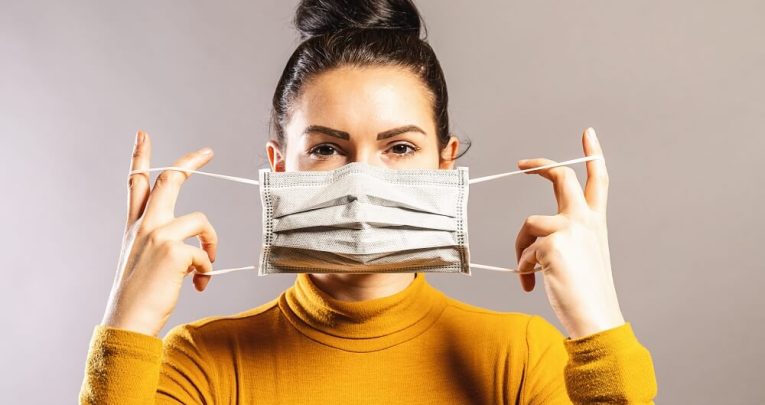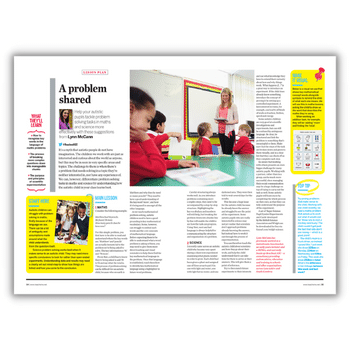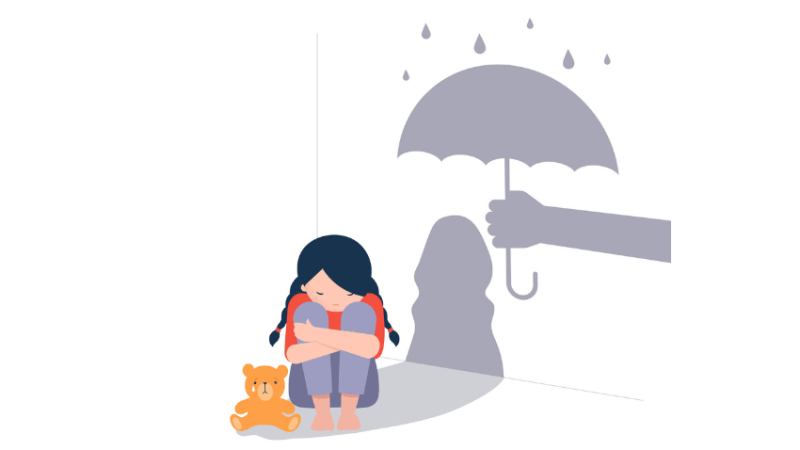COVID restrictions and deaf children – are we masking the problem?

Nearly every child’s learning has suffered over the past year, but how many of us are truly aware of the challenges deaf students have faced?
- by Ian Noon

Have you met a deaf person before? With nine million across England, you probably have, even without knowing. But how about a deaf child? Possibly not.
So you might not know there are 45,000 in England alone, or that they’re currently facing the challenge of their educational lifetimes. Deaf children battle many misconceptions. They’re born deaf, use sign language, go to deaf schools and can’t hear any sound, right?
Actually, for most deaf children, this isn’t true. Only half are born deaf. More than 75 per cent go to mainstream schools. Just one in 10 use sign language in school. The vast majority can access some sound, often through hearing technology.
Most people understandably don’t know much about deafness. We’re working on that. The problem is, schools often don’t have any deaf pupils, so their knowledge is limited too. When a deaf child arrives, this needs to change fast. Most deaf children get support at school. Deafness itself isn’t a learning disability, so they should achieve the same as their hearing classmates.
However, gaps in this support mean too many deaf children underachieve throughout school. On average, they achieve an entire grade less at GCSE. They’re less likely to get A-Levels, go to university or find a job.
During COVID-19, things could get even worse. As a charity, we work to give teachers the tools to support deaf children. So at this difficult time, this is what good support looks like.
When to wear facemasks
Almost all deaf children rely on lip reading and fight an exhausting daily battle to understand their teachers and classmates. Face masks have made that even harder, leaving some deaf children reluctant to go to school. Others come home in tears.
Government guidelines don’t recommend face masks in class, but our research shows half of deaf children in secondary schools have teachers wearing them. Schools need to make sure their deaf pupils can understand in class, so before changes are made, they must hold discussions with specialist teachers, parents and deaf children themselves. Together, they can identify and meet a deaf child’s needs.
Government advice also allows face masks to be temporarily removed when communicating with deaf people. Where this isn’t possible, clear face masks will work for many deaf children. Sadly, there is no catch-all solution for this huge challenge, but with tailored support and reasonable adjustments, teachers can help deaf children understand their lessons.
Learning from specialist staff
Teachers of the Deaf are vital for deaf children, and a key part of their role is advising schools on teaching deaf pupils.
Given the classroom time lost this year, deaf children face a huge battle to catch up. Teachers of the Deaf must be consulted regularly to make sure the learning environment works for deaf pupils, particularly when they’re moving classrooms every lesson.
Where necessary, in line with government guidelines, Teachers of the Deaf must be allowed to visit schools or provide support remotely. Where schools or college provide catch-up support and tuition, Teachers of the Deaf must be involved too, particularly where staff haven’t worked with deaf pupils before.
With a tailored and accessible catch-up program, deaf children can still achieve their potential.
Offering radio aids
A radio aid broadcasts the wearer’s voice to a receiver, which clips onto a deaf child’s hearing technology. It means they get their teacher’s voice straight to their ear, making it much easier to hear.
Many deaf children need one and we’re expecting the number to increase during COVID-19. Local authorities and schools need to work together to provide this technology.
Some schools are withholding radio aids because of COVID-19 hygiene concerns, although they likely carry no more risk than other school equipment. Many children aren’t allowed to take them home, making remote learning or conversations with family difficult to understand.
This needs to change. Teachers can clean radio aids in the same way as mobile phones, without damaging them. Local authorities can work with schools and Teachers of the Deaf to identify who needs a radio aid and let children take them home.
Although minor, these changes would make a massive difference to deaf children’s lives.
Remote learning
Setting up remote learning has been a major challenge for schools. There may be no alternative in some areas, particularly in local lockdowns or when pupils are self-isolating, so deaf children must be considered in this.
There are simple things that teachers can do to make remote learning deaf-friendly, but we know of many cases where it’s been inappropriate or inaccessible for deaf students.
Schools are required to make reasonable adjustments so deaf students can access remote teaching and online learning, such as subtitling software, British Sign Language translation and video calls with support staff. They also need to consider whether families have access to technology at home, and whether features such as voice recognition captions are enabled.
The challenges created by COVID-19 have been unprecedented. Teachers and schools are battling on admirably, but we cannot rest. No deaf child should struggle on alone, particularly when their education, mental health and life chances are on the line.
So we’d ask all schools to discuss the changes they make with deaf children and their families. By involving a Teacher of the Deaf or their Local Authority Specialist Education Service, they’ll be equipped with expert advice too.
By working together, we can all make sure no deaf child is ever left behind. More resources, including our helpline and blogs on these topics, are available the the NDCS website.
“She was in tears two days’ running”
Kate lives in Nottinghamshire. Her daughter Anna, 11, has progressive hearing loss. She uses hearing aids and relies on lip reading too.
When Anna started secondary school, there was lots of communication with the school and specialist staff, but Kate says they couldn’t give clarity on face mask use and they weren’t sure if her radio aid could be passed round teaching staff.
‘She came out of school in tears two days running, as she hadn’t understood anything in tutor time. I’ve asked if she could give Anna notes on what she was talking to the class about.
In the classroom, pupils now have to face forward. Anna sits at the front, but in a class discussion when someone behind her speaks, she’s not allowed to turn and lip read. We’re trying to educate the teachers to repeat questions, but it’s a hard slog.
The school also experimented with captions on video work, but ran into problems and Anna was told that the rest of the class needed to hear. They were removed. A couple of teachers use clear visors, which is better, but then the light hits it and it’s impossible to lip read. Her radio aid can also sound muffled by a mask or visor.
Face masks on the school bus mean she can’t interact with her friends. Compulsory masks in communal areas of the school also really limit the interaction she gets at break time, on top of the problem of untangling her mask and hearing aids.
We worry about her education suffering, but I suppose the bigger picture is as long as everyone stays healthy we’ll be okay. I think many young people will have mental health effects from this, not just our deaf young people. The added isolation is hard for them.”
Ian Noon is head of policy at the National Deaf Children’s Society; for more information, visit ndcs.org.uk or follow @NDCS_UK.











